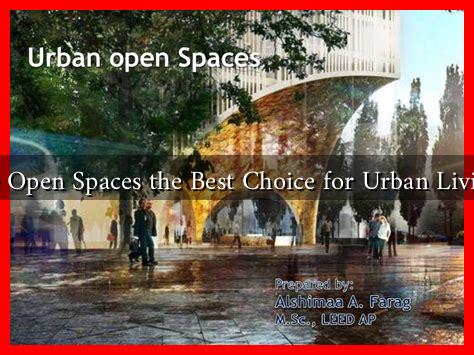-
Table of Contents
Are Open Spaces the Best Choice for Urban Living?
As urbanization continues to rise, the debate over the best living conditions in cities has intensified. One of the most compelling arguments in favor of urban living is the integration of open spaces. These areas, which include parks, gardens, and recreational zones, are increasingly recognized for their numerous benefits. But are they truly the best choice for urban living? This article explores the advantages and challenges of open spaces in urban environments, supported by case studies and statistics.
The Importance of Open Spaces in Urban Areas
Open spaces play a crucial role in enhancing the quality of life in urban settings. They provide a respite from the hustle and bustle of city life and contribute to the physical and mental well-being of residents. Here are some key benefits:
- Health Benefits: Access to parks and green spaces encourages physical activity, which can reduce obesity rates and improve overall health. A study published in the International Journal of Environmental Research and Public Health found that individuals living near parks are more likely to engage in regular exercise.
- Mental Well-being: Green spaces have been linked to reduced stress levels and improved mental health. A study by the University of Queensland found that spending time in nature can significantly lower anxiety and depression.
- Community Cohesion: Open spaces serve as communal hubs where residents can gather, fostering social interactions and community bonds. Events held in parks can strengthen neighborhood ties.
- Environmental Benefits: Urban green spaces help mitigate the urban heat island effect, improve air quality, and support biodiversity. They act as natural filters for pollutants and provide habitats for various species.
Case Studies: Successful Urban Open Spaces
Several cities around the world have successfully integrated open spaces into their urban planning, showcasing the potential benefits:
- New York City’s Central Park: Central Park is a prime example of how open spaces can transform urban living. Spanning 843 acres, it offers a variety of recreational activities and serves as a vital green lung for the city. Studies have shown that property values near Central Park are significantly higher than those further away.
- Melbourne’s Royal Botanic Gardens: These gardens not only provide a beautiful escape but also contribute to the city’s biodiversity. They attract millions of visitors each year, enhancing tourism and local businesses.
- Copenhagen’s Superkilen Park: This innovative park celebrates cultural diversity and community engagement. It features elements from various countries, promoting inclusivity and social interaction among residents.
Challenges of Open Spaces in Urban Living
While the benefits of open spaces are substantial, there are also challenges that need to be addressed:
- Maintenance Costs: Open spaces require ongoing maintenance, which can strain city budgets. Ensuring that parks are clean, safe, and well-maintained is essential for their continued use.
- Equity Issues: Not all neighborhoods have equal access to open spaces. Low-income areas may lack sufficient green spaces, leading to disparities in health and well-being among residents.
- Gentrification: The development of parks can lead to increased property values, which may displace long-term residents. This phenomenon, known as gentrification, can undermine the very community cohesion that open spaces aim to foster.
Conclusion: The Future of Urban Living
Open spaces undoubtedly offer numerous benefits that enhance urban living, from promoting health and well-being to fostering community ties. However, the challenges associated with their maintenance, accessibility, and potential for gentrification must be carefully managed. As cities continue to grow, integrating open spaces into urban planning will be essential for creating sustainable and livable environments. Ultimately, the best choice for urban living may not solely depend on the presence of open spaces but also on how effectively they are integrated into the fabric of city life.
In conclusion, while open spaces are a vital component of urban living, their success hinges on thoughtful planning and equitable access for all residents. As cities evolve, prioritizing these green areas can lead to healthier, happier communities.

